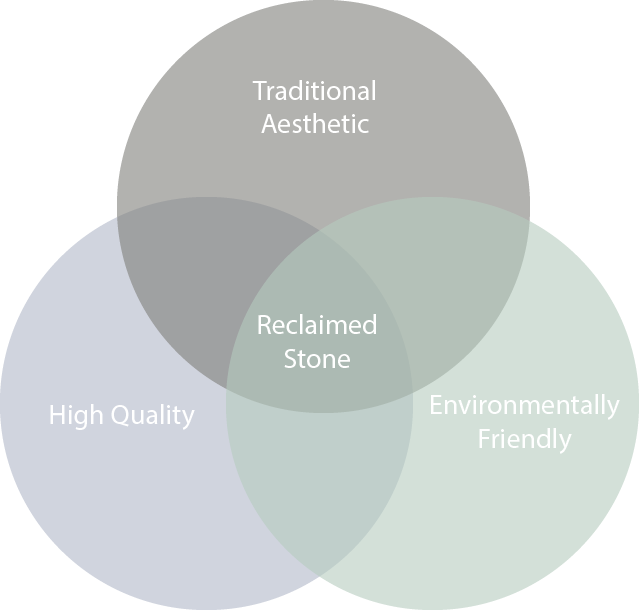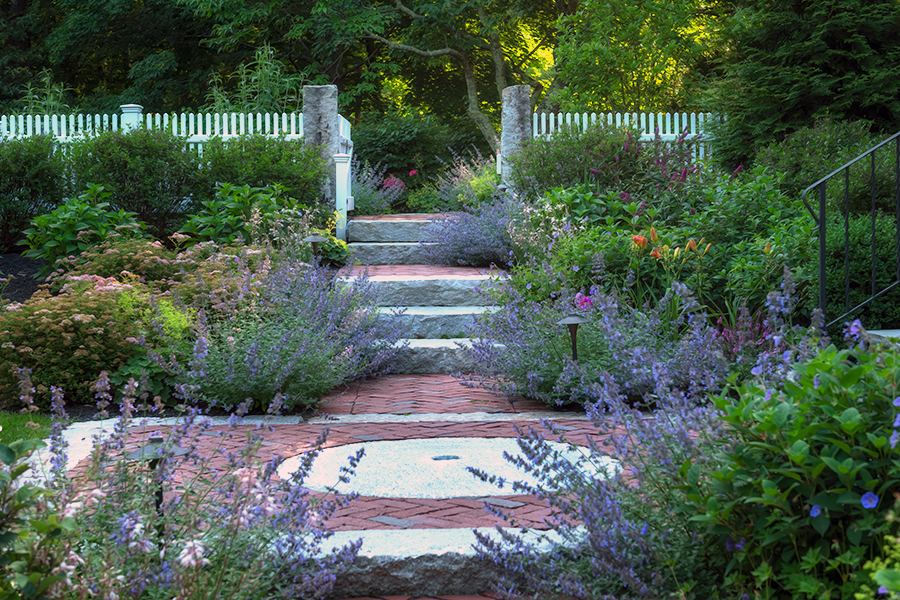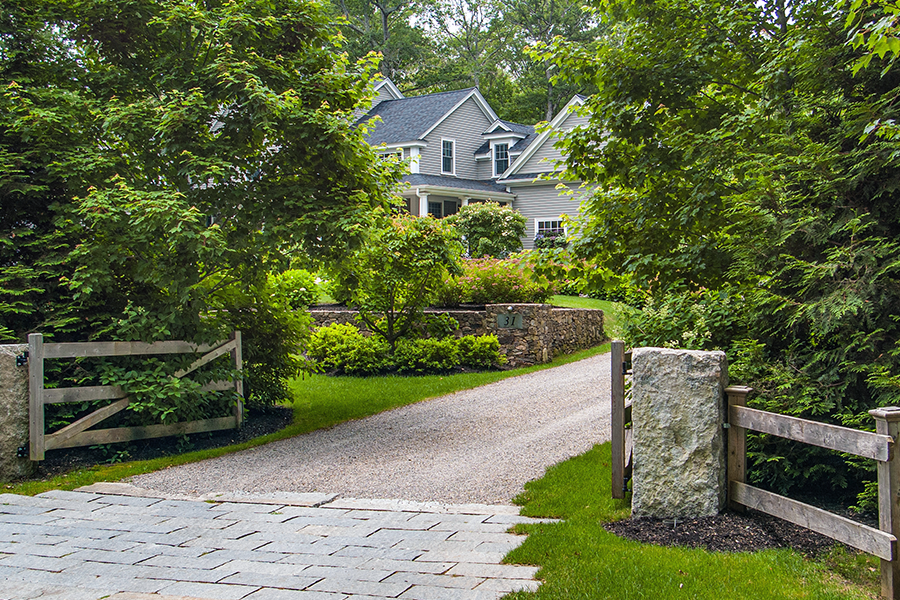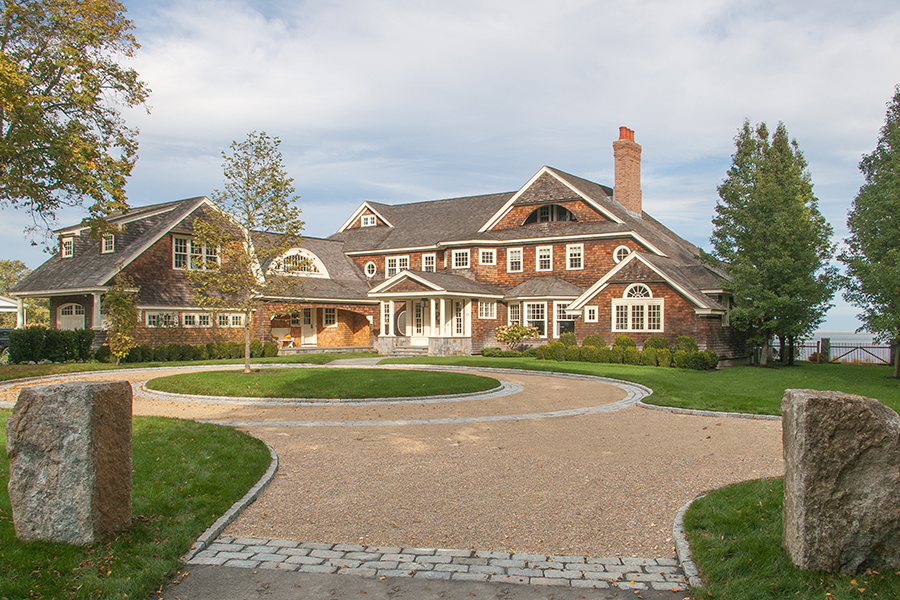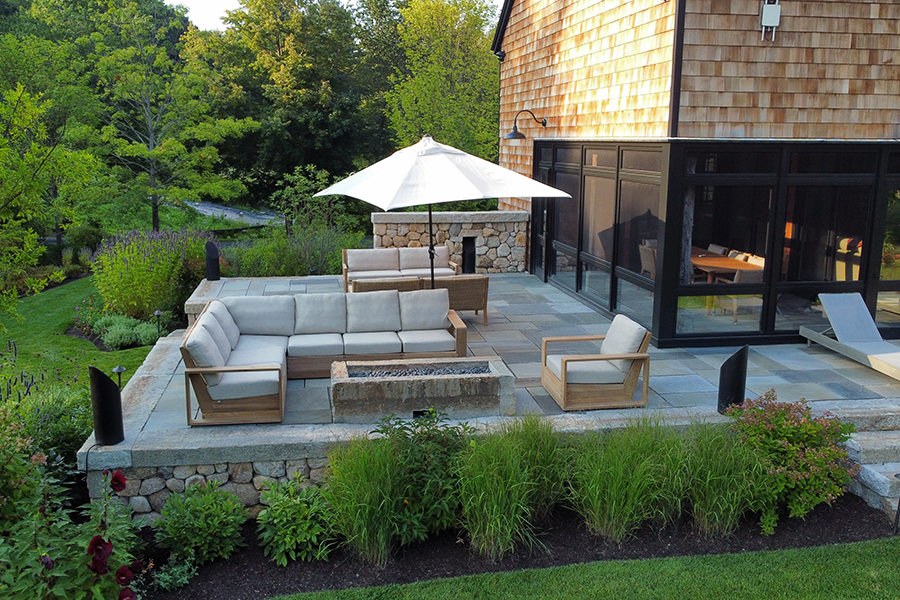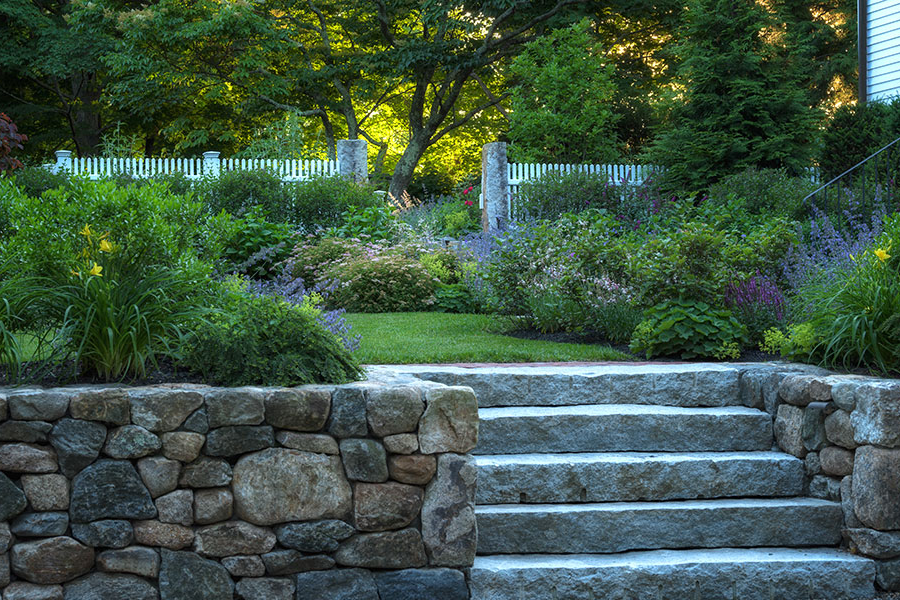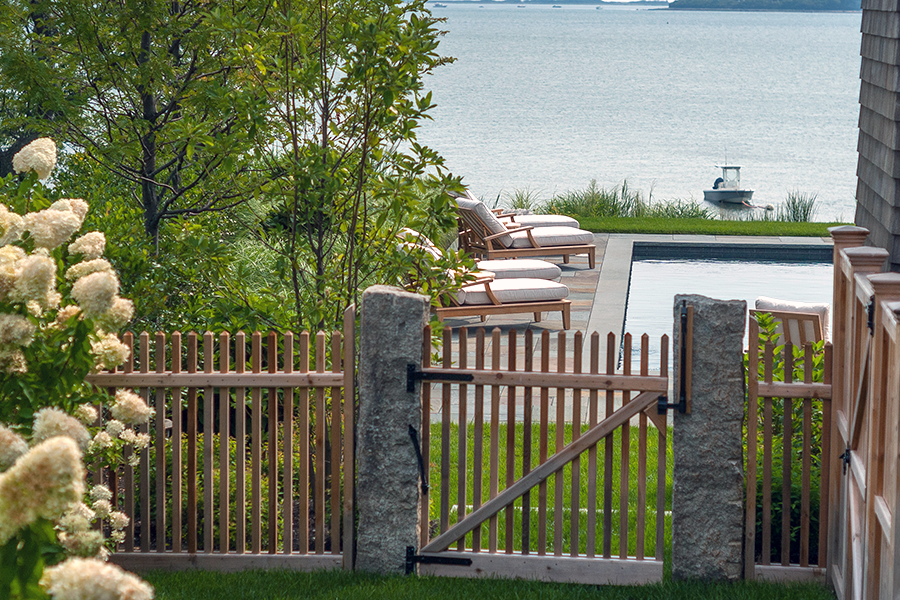Finding the Nexus
While the team at a Blade of Grass does not subscribe to a single design approach, much of our work is in a traditional style that complements the historical architecture of the Boston MetroWest area where we work. We strive to find materials appropriate to this approach which are environmentally sensitive. Reclaimed stone exists at the perfect nexus of traditional look, high quality material, and environmental responsibility.
One of our most common design challenges is how to make a new house, or a house that has had new work done, look like it’s been sitting comfortably on its property for a long time. We’re essentially looking for ways to borrow time, to make the property look well-aged. One solution is to plant mature plants. Nothing says established like a big shade tree on your property. Another solution is to use reclaimed materials, especially stone.
Working with Reclaimed Stone
A mature tree is still going to look relatively new, compared to a tree that has been growing in one spot for decades, but with stone you can bring beautiful patina to your landscape in several unique ways. We have installed cobble that was reclaimed from old roads with the wear of thousands of feet and tires having smoothed the surfaces. We’ve installed reclaimed bricks that had mellowed in color to a lovely warm, earthy, orange-brown. We’ve installed granite blocks which had lived a previous life as a seawall in Boston harbor. We’ve even installed bluestone pieces that were once sidewalks in Central Park.
With reclaimed stone you know that you’re working with an incredibly durable material. Most of our reclaimed stone has been in use for tens, if not hundreds, of years. It has quite literally stood the test of time. The real beauty of reclaiming building products, in general, is that instead of demolishing something and sending it to a landfill, you are salvaging the material and using it to build something new.
Reclaimed Benefits
Aside from keeping building material out of landfills, reclaimed materials also have the benefit of reducing extraction and manufacturing impacts. Much of the reclaimed granite that we use is from Rockport quarries, which haven’t been in operation since the early 1900’s. Most of the quarrying and cutting of the stone happened over a hundred years ago and was done by hand and steam power. The stone has been transported multiple times throughout its lifespan, but mostly very locally. Rockport is only 50 miles from our office, and much of the stone we have used was also first utilized within Massachusetts.
Though we don’t always think of it as reclaimed, even our most used wall stone has been built with previously. Our go to wall building stone is New England fieldstone, which is harvested from abandoned stone walls throughout New England. Those old stone walls were often built with the rocks that came to the surface as fields were plowed. It’s hard to know the age of the stones we’re using, but there’s a good chance that we’ve recycled stones that were first stacked hundreds of years ago.
Our Impact
With estimates of almost one third of the world’s waste stream generated by the construction industry, we are always conscious of our environmental impact and striving to find ways to lessen it. The reuse of building materials is a simple way to take a positive step, without compromising on aesthetics or durability.
